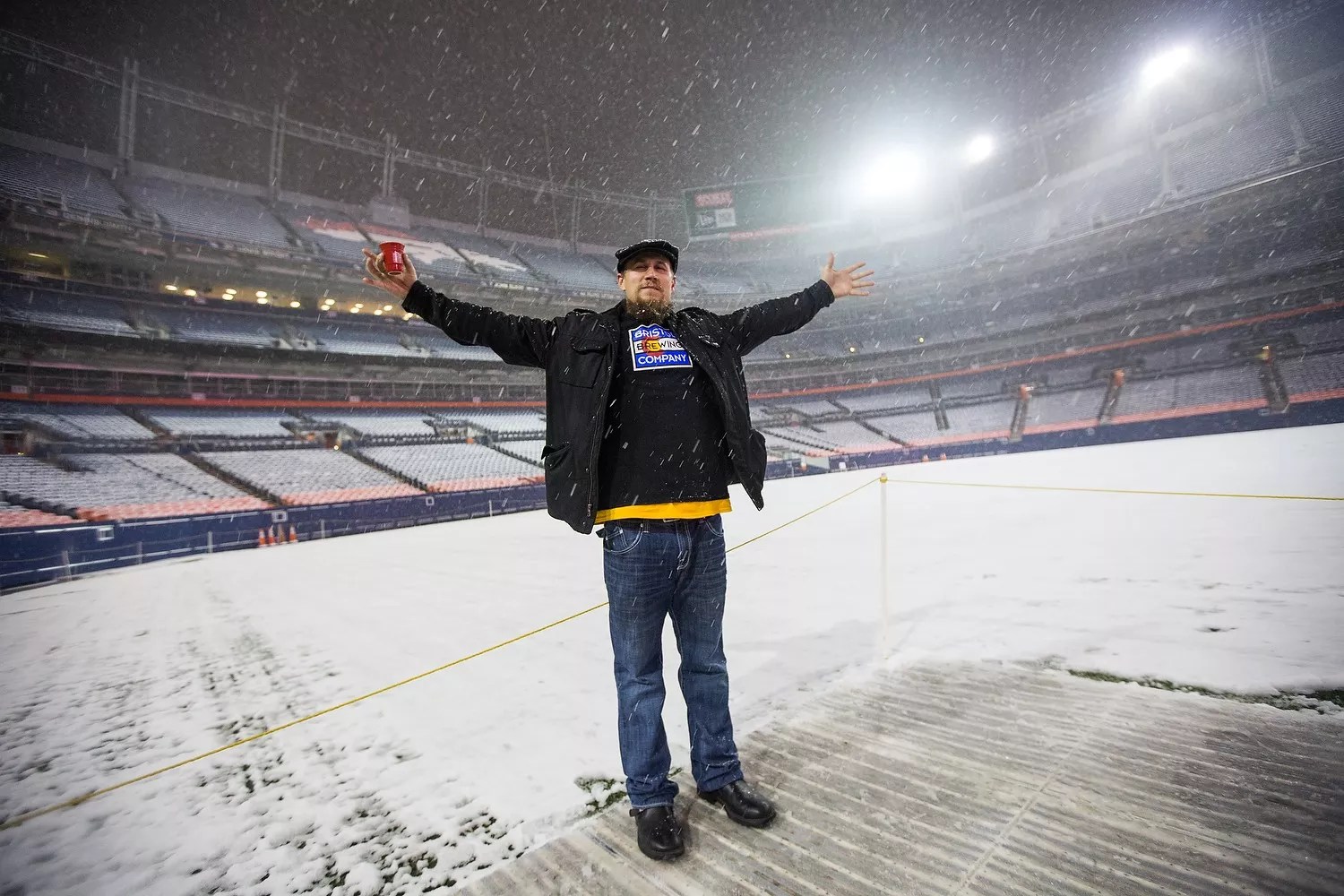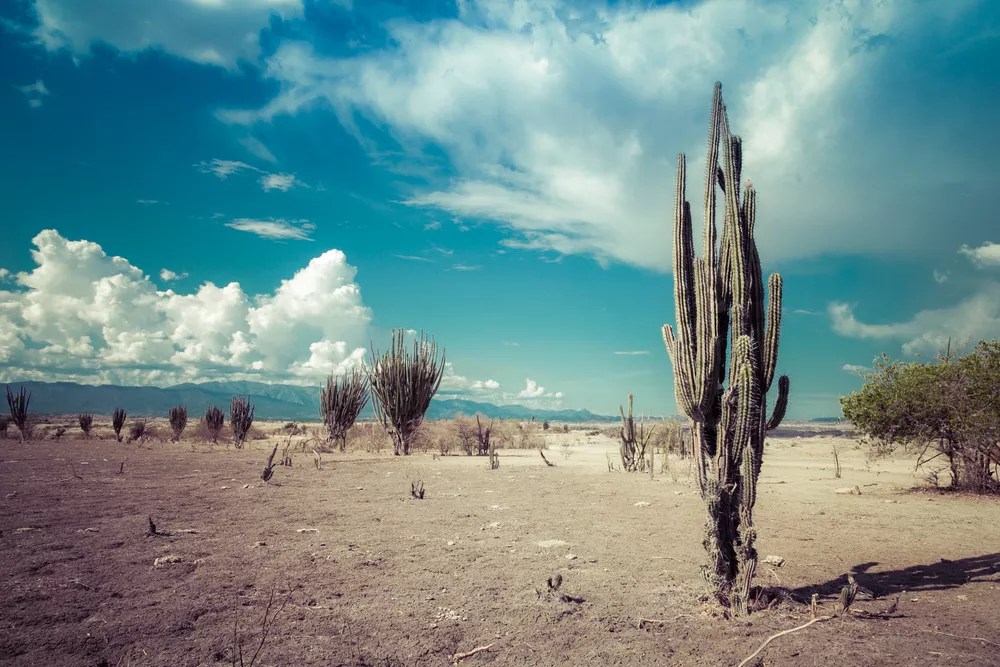
Danielle Lirette

Audio By Carbonatix
Maybe more than most places, Denver and Colorado depend on weather for our livelihood. Of course the ski resorts need snow, but we also need that melting snow come spring for our drinking water, and the wonderful, abundant sunshine for our tourism (even if there are some myths lumped in there about how much sun we get every year, but more on that later). Heck, our license plates even have snow on them, perhaps a quiet tribute to our love for – and appreciation of – our wild weather.
If you like a mix of seasons, sunny weather (even if it’s not 300 days a year’s worth, but more on that later), bits of warm air pretty much year-round, massive temperature swings and the occasional blizzard, you’re in the right place. Here are ten things to know about Denver’s weather.
10. Don’t like the weather? Wait fifteen minutes. No, seriously.
Every city seems to claim the adage “If you don’t like the weather, wait fifteen minutes.” In Denver, it’s actually true.
Denver, make your New Year’s Resolution Count!
We’re $14,000 away from our End-of-Year campaign goal, with just a couple of days left! We’re ready to deliver — but we need the resources to do it right. If Westword matters to you, please contribute today to help us expand our current events coverage when it’s needed most.
In the spring, fall and sometimes during the winter, our cold fronts are the real deal. If you’ve lived here for at least a year, you know what we’re talking about: a huge, 20-degree-plus drop in temperature in an hour or two, or even a few minutes.
Remember last month when we hit 81 degrees on November 27? The next day our high was just 46 degrees, a 35-degree drop in temperature in just 24 hours. That happens all the time here, especially during fall and spring.
How about this fun fact? On January 25, 1872, Denver’s high temperature was 46 degrees. It dropped down to negative-20 degrees that night – a 66-degree one-day temperature split!

Colorado Mills has barely reopened for business after a hailstorm destroyed parts of the mall in May.
Brandon Marshall
9. Hail, no: May and June are our stormiest and wettest months.
It’s hard for us to get storms in the fall and winter; we’re just too dry and cold in those months. But come late spring and early summer, a few ingredients really come together to make some massive storms.
Usually, fronts, ample moisture and strong winds at the surface and aloft come together to bring us big, bad storms, particularly during May and June. For example, the huge hailstorm that put the Colorado Mills mall out of commission for several months was in May.

Brandon Marshall
8. Our warmest temperature on record…
…is 105 degrees, last seen during the epically hot summer of 2012 that led to horrendous wildfires around our state. We’ve hit 105 degrees four times: twice in 2012 (June 25 and 26), once in July 2005 and another time in August 1878.

Danielle Lirette
7. Our coldest temperature on record…
…is negative-29 degrees, way back in January 1875, when Ulysses Grant was president. More recently, we hit negative-25 degrees back in December 1990, tied for our second-coldest reading on record.
For those doing the math, that puts our warmest-to-coldest temperature range at 134 degrees.

solarseven/shutterstock.com
6. Tornadoes aren’t common, but they happen.
Tornadoes are more common in eastern Colorado, coming from storms that have strengthened after rolling off the mountains.
Denver County has seen seventeen tornadoes since 1950. The most recent was an EF-1 (short for Enhanced Fujita) tornado back in 2015. They’re rare, but they happen.
Fortunately, a tornado hasn’t killed anyone in Denver, though thirteen injuries have been reported from tornadoes in our county since 1950.

Danielle Lirette
5. We get snow earlier and later than just about anyone.
With our first snowfall taking place on October 18 on average, Denver’s first measurable snow is earlier than any major American city in the lower 48. Anchorage’s first measurable snow falls on average only two days earlier than ours, on October 16.
Our average last measurable snowfall is on April 27, though we saw snow as late as June 12th (!), back in 1947.
In other words, keep your parka handy all year. Except maybe in July. Maybe.

Danielle Lirette
4. Our snowiest month of the year is…
…March, with an average of 11.4 inches.
Snowy Marches, however, are boom-or-bust, as they usually come with one big storm, or maybe two in a bad year. And storms are also fairly inconsistent in March. Last year’s, for example, didn’t see any measurable snowfall, while March 1944 saw as much as 32.5 inches.
Our second-snowiest month, April, with 8.8 inches on average, may really throw you for a trip. Spring snowstorms are common, as the jet stream dips far enough south to bring us the snows that can devastate crops and Rockies games as late as Cinco de Mayo. You’d do best not to plant things before May. Trust us.

lissydjones at Flickr
3. So how much snow do we get a year?
About 57 inches of snow a year, or a bit less than five feet. Rather than a bunch of small storms like Minneapolis or Detroit get, our snow tend to come in big clumps, which is also why our seasonal snowfall totals vary so widely, from barely 20 inches in 1888-’89 to 118.7 inches in 1908-’09.

Ilyshev Dmitry/shutterstock.com
2. We’re almost a desert.
With an average of 14.30 inches of total precipitation a year, Denver’s average annual rainfall is about a third of what Dallas and Chicago see in an average trip around the sun, about a quarter of New York City’s and a fifth of Miami’s. Phoenix gets about eight inches of rain a year, and that city is actually in a desert.
It’s our positioning next to the Rockies that keeps us so dry. Prevailing winds in the U.S. and across North America come from the west, and that’s where the Rockies lie in proximity to Denver. When air particles come into the Front Range, they mostly zoom down off the Rockies, a warming and drying process.

Denver isn’t always sunny, but it’s still fun.
Brandon Marshall
1. 300 days of sunshine a year? A load of crap, but our weather is still amazing.
Sorry to bust your chops, Chamber of Commerce and everyone trying to sell Denver to outsiders, but the rumor that Denver gets 300 days of sunshine a year is actually a myth. It’s a believable one, sure, but still mostly fiction.
But that doesn’t mean our weather isn’t awesome in its own right.
Seasons? Check. Snow that looks beautiful when it falls and melts as soon as it turns brown and gross? Check. Refreshingly cool overnight temperatures in the heart of summer? Check. Randomly glorious 70-degree days in January? Check (most years). And, yes, we do get a lot of sun, and a lot more than just about anyone east of us.
If you like a mix of seasons, sunny weather (even if it’s not 300 days a year) and bits of warm air pretty much year-round filled with massive temperature swings and the occasional blizzard, you’re in the right place.